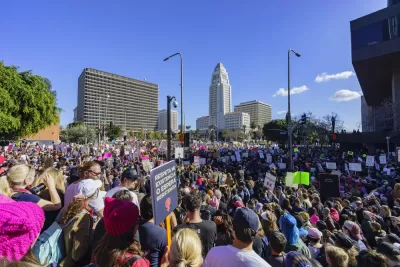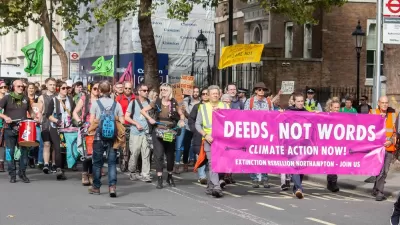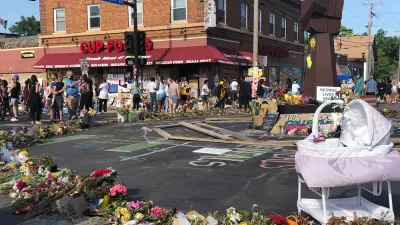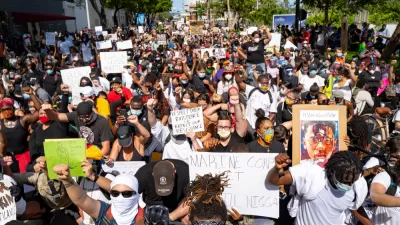Christopher Hawthorne examines the unprecedented protests of the Women's March and the more recent airport protests for lessons in the understanding and appreciation of public space.

Los Angeles Times Architecture Critic Christopher Hawthorne is providing analysis of the function of public space in the protests of recent weeks. The latest example is a February 2, 2017 column about the protests at LAX and other airports around the country in response to an executive order by President Donald Trump to "suspend the U.S. refugee program and temporarily prohibit entry to citizens of seven predominantly Muslim countries…"
Hawthorne focuses on airports as sites that embody many of the ideas and ideals contested by the Trump Administration's action. "It’s also true that the international terminals of American airports, however much some of us dread their long lines and placeless design, are conveners for the kind of cosmopolitanism and multiculturalism that Trump’s nativist, 'America first' rhetoric has put squarely in the cross-hairs," writes Hawthorne.
Yet, throughout the article Hawthorne never loses sight of the deficiencies of design inherent in airports everywhere. Somehow, however, these deficiencies supplemented the political outcry of the thousands of protestors that occupied the airport. "Unlike a public square, which tends to operate as a successful political space to the degree that it’s an effective public one, the airport is a hospitable host for protest precisely because of how poorly it works in terms of civic design on a typical day," writes Hawthorne in describing this surprising, previously undiscovered ability of airports.
Another article by Hawthorne, published on January 21, 2017, examines the Women's March protest that took place in Los Angeles. That protest sprawled from Pershing Square (a much-lamented public square in the middle of Downtown, which is also in line for a massive overhaul) to the newer Grand Park, located across the street from City Hall. In that article, Hawthorne considers the Women's March as "another sign of the city’s continuing effort to redefine, or at least recalibrate, its public-ness." In evaluating the performance of the city's downtown public and civic space, Hawthorne tests Los Angeles' readiness for a new era of public living. His review is mixed.
FULL STORY: Building Type: The airport as public square and protest central

Planetizen Federal Action Tracker
A weekly monitor of how Trump’s orders and actions are impacting planners and planning in America.

Restaurant Patios Were a Pandemic Win — Why Were They so Hard to Keep?
Social distancing requirements and changes in travel patterns prompted cities to pilot new uses for street and sidewalk space. Then it got complicated.

Map: Where Senate Republicans Want to Sell Your Public Lands
For public land advocates, the Senate Republicans’ proposal to sell millions of acres of public land in the West is “the biggest fight of their careers.”

Maui's Vacation Rental Debate Turns Ugly
Verbal attacks, misinformation campaigns and fistfights plague a high-stakes debate to convert thousands of vacation rentals into long-term housing.

San Francisco Suspends Traffic Calming Amidst Record Deaths
Citing “a challenging fiscal landscape,” the city will cease the program on the heels of 42 traffic deaths, including 24 pedestrians.

California Homeless Arrests, Citations Spike After Ruling
An investigation reveals that anti-homeless actions increased up to 500% after Grants Pass v. Johnson — even in cities claiming no policy change.
Urban Design for Planners 1: Software Tools
This six-course series explores essential urban design concepts using open source software and equips planners with the tools they need to participate fully in the urban design process.
Planning for Universal Design
Learn the tools for implementing Universal Design in planning regulations.
Heyer Gruel & Associates PA
JM Goldson LLC
Custer County Colorado
City of Camden Redevelopment Agency
City of Astoria
Transportation Research & Education Center (TREC) at Portland State University
Camden Redevelopment Agency
City of Claremont
Municipality of Princeton (NJ)





























